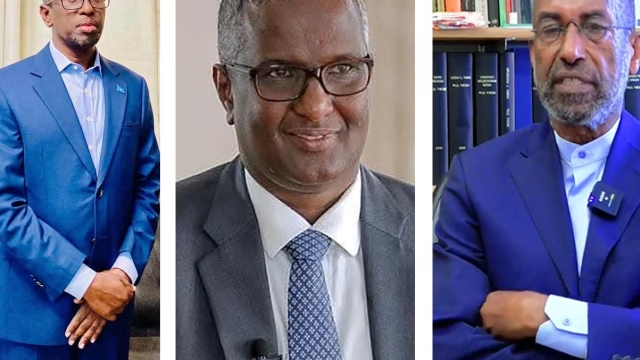Some 9.6 million people had been displaced in 12 countries in Eastern Africa by end of…
 Some 9.6 million people had been displaced in 12 countries in Eastern Africa by end of March either as refugees or internally displaced persons, the UN humanitarian agency said on Saturday.
Some 9.6 million people had been displaced in 12 countries in Eastern Africa by end of March either as refugees or internally displaced persons, the UN humanitarian agency said on Saturday.
In its latest report released in Nairobi, the UN Office for Coordination of Humanitarian Affairs (OCHA) Eastern Africa said this represents a decrease of 328,066 individuals since the end of September 2013, when there were 9.9 million people displaced in the region.
“Of the total displaced population, 2.28 million are refugees while 7.29 million are internally displaced persons (IDPs) and people severely affected by conflict,” OCHA said in its latest Displaced Populations Report.
The report highlights the status of displacement for both refugees and internally displaced persons in Eastern Africa between September 30, 2013 and March 31.
The report says the number of IDPs reduced by six percent (464, 011 people) during the last six months due to a notable reduction in the total IDP figures for DRC, Sudan and Ethiopia, against a significant increase of more than 405 percent (over 640,000 people) in South Sudan.
“DRC, Sudan, Somalia and South Sudan continue to record the highest number of IDPs and persons severely affected by conflict at an estimated 2.6 million, 2.0 million, 1.1 million and 0.8 million people respectively,” said OCHA.
According to the report, the insecurity in DRC has further compelled an estimated 400,000 Congolese to live as refugees in neighboring countries.
The report finds that Uganda hosts 46 percent (171,126 individuals) of the entire Congolese refugee population in the region, while 99 percent of the total refugee populations in Rwanda and in Burundi are of Congolese origin.
Ethiopia and Uganda each hosted over 35 percent of the South Sudanese refugee caseload (254,600) in the region, it says.
“The refugee population in the region has during the reporting period of six months increased by over 136,000 people to 2.3 million people,” OCHA said.
Major refugee population increases were recorded in Uganda (over 140,000 people); Ethiopia (over 100,000 people); DRC (over 64,000 people) and Kenya (over 43,000 people).
New arrivals were mainly from South Sudan, eastern DRC, Somalia and Sudan, where the security situation remains volatile.
Kenya and Ethiopia currently host the largest refugee numbers at 487,367 and 524,540 refugees respectively while Somalia with over 960,000 Somalis in the region is now the third-highest refugee-generating country after Afghanistan and Syria.
Kenya has for many years generously hosted tens of thousands of Somalis refugees, fleeing fighting from central and southern Somalia, South Sudan, Ethiopia and DRC whose lives were at substantial risk that requires international protection.
Kenya, which hosted protracted negotiations that culminated in the formation of the governments in South Sudan and Somalia, says the refugee situation continues to pose security threats to Nairobi and the region apart from the humanitarian crisis.
The Tripartite Agreement which was signed by Kenya, Somalia and UNHCR in November 2013 establishes a legal framework and other support for Somali refugees in Kenya who might eventually wish to return to their homeland.
According to the report, displacement trends in the Eastern Africa region continue to be driven by internal armed conflicts, inter-communal fighting and generalized insecurity.
The region also remains prone to natural disasters, particularly floods and drought, resulting in temporary displacement. Kenyan security officials believe armed groups have used the refugee camps as bases to prepare attacks and then mingled with residents in urban areas to carry them out.
The East and Horn of Africa continue to suffer from conflict and displacement but Kenya remains the largest refugee-hosting country in Africa.
While most people fleeing from conflict in South Sudan arrive in Kakuma in northern Kenya, most Somali refugees flee to Dadaab, located in Garissa County in the former North Eastern Province of Kenya.
The Dadaab refugee complex has a population of 355,709 refugees and asylum seekers as at May 31 and consists of five camps. About 96 percent of the refugees are from Somalia.


